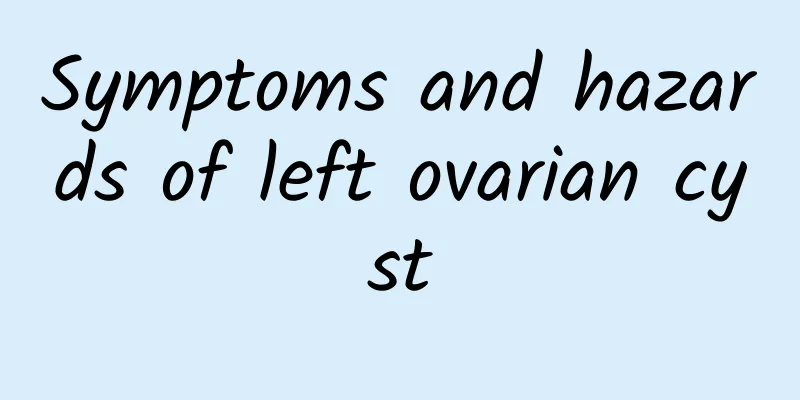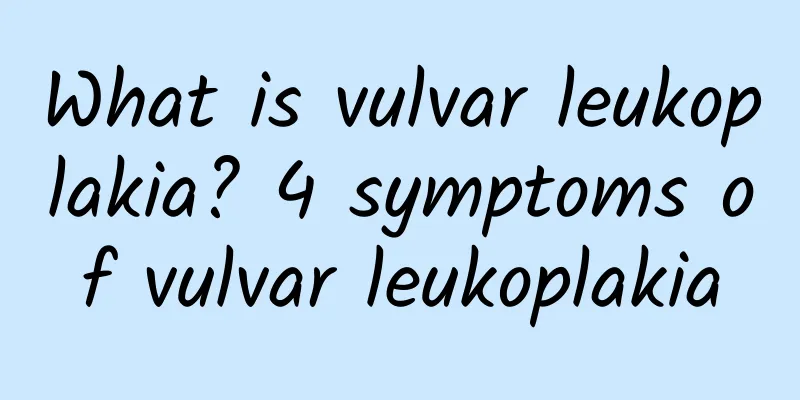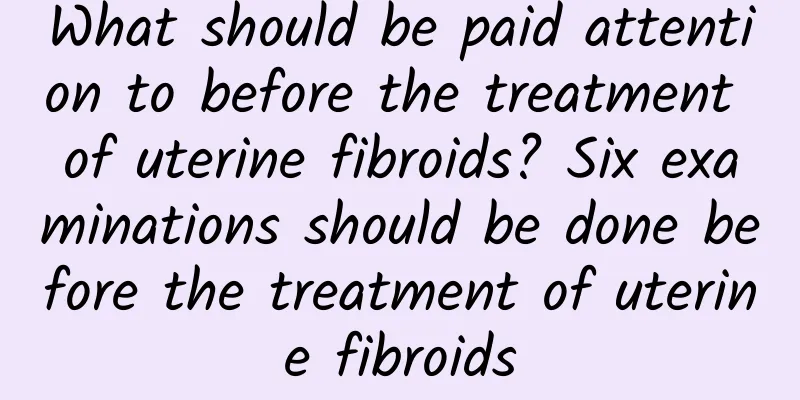Symptoms and hazards of left ovarian cyst

|
Symptoms of left ovarian cysts usually include abdominal pain, abnormal menstruation, lower abdominal distension and pain, etc. The harm may lead to ovarian dysfunction and infertility. In severe cases, the cyst may rupture or twist, and timely medical examination is required. The disease can be effectively controlled through reasonable diagnosis and treatment, such as drug therapy, surgical intervention or lifestyle adjustment. 1. Symptoms of left ovarian cyst Common symptoms of a left ovarian cyst include dull pain or distension in the lower abdomen, which may be intermittent or continuous. Some patients may experience irregular menstruation, manifested as irregular periods, increased or decreased menstrual flow, or even amenorrhea. Some people may also feel uncomfortable during sex or find an abnormal mass in the abdomen. In more serious cases, the enlargement or rupture of the cyst may cause sudden and severe abdominal pain, even accompanied by nausea and vomiting. If these symptoms occur, you should pay close attention and seek professional medical advice. 2. Harm of left ovarian cyst 1. Impaired ovarian function: Long-term untreated cysts may compress ovarian tissue, causing ovarian atrophy or dysfunction, and creating the risk of infertility. 2. Acute abdominal pain caused by cyst rupture or torsion: Some larger cysts may rupture suddenly, causing severe intra-abdominal bleeding or infection. Cyst torsion will interrupt the blood supply to the ovaries, endangering the survival of the ovaries. 3 Malignant lesions: Although most ovarian cysts are benign, a small number of cysts may become cancerous. Especially for older women or those with a family history of cancer, regular examinations should be conducted to rule out the possibility of malignancy. 3. How to deal with left ovarian cyst 1 Drug treatment: For small functional cysts without obvious symptoms, your doctor may prescribe oral contraceptives to regulate hormone levels, prevent cyst growth and relieve symptoms. 2. Surgery: If the cyst is large, growing rapidly, or suspected to be malignant, surgery may be required. Common surgeries include laparoscopic cystectomy, open surgery, or oophorectomy, depending on the size and nature of the cyst. 3 Lifestyle adjustment: Pay attention to maintaining a regular schedule, eat a healthy diet, reduce the intake of high-fat foods, exercise moderately to maintain a healthy weight, and avoid the risk of cysts due to endocrine disorders. When severe abdominal pain occurs, avoid strenuous activities, moderate sexual life, and seek medical attention as soon as possible. If the left ovarian cyst is not treated in time, it may bring great health risks. It is recommended to have regular gynecological examinations including ovarian ultrasound every year to detect problems and intervene early to protect health. If symptoms or cysts are diagnosed, do not delay and follow the professional to develop a personalized treatment plan in time to ensure early detection and early treatment. |
<<: Common symptoms of adenomyosis
>>: Causes of hydatidiform mole
Recommend
How to take care of cervical erosion? Summary of 5 key points of care for cervical erosion in women
As a common gynecological disease, women may suff...
What is the effective way to treat vulvar leukoplakia?
Many women ask, how can I cure vulvar leukoplakia...
What oral medication is best for treating uterine effusion?
The uterus is the lowest part of the abdominal ca...
What are the symptoms of ovarian cysts and can they cause dysmenorrhea?
What are the symptoms of ovarian cysts? Will it c...
Symptoms and features of submucosal uterine fibroids
Uterine fibroids are the most common benign tumor...
What medicine can cure endometritis and pelvic inflammatory disease faster?
Endometritis and pelvic inflammatory disease can ...
What are the treatments for cervical erosion?
Cervical erosion has certain hazards, such as cau...
What is normal amenorrhea?
Amenorrhea mostly refers to menopause. Under norm...
What are the symptoms of unclean spontaneous abortion? Let's analyze them carefully.
Spontaneous abortion is common, but there may be ...
What to add to pigeon stew to treat uterine fibroids? Can pigeon soup treat uterine fibroids?
What can be added to pigeon stew to treat uterine...
Is it difficult to implement a balanced diet? Learn 10 tips for healthy eating and eat right nutrition easily
It is often said that a balanced diet is very imp...
It is important for women to take measures to prevent cervical erosion
Cervical erosion is a disease suffered by most pe...
How to care for grade 2 cervical precancerous lesions
Gynecologists say that as the age of onset of cer...
Can ovarian cysts delay menstruation?
Ovarian cysts are a common gynecological disease ...
Is 30mm of pelvic effusion serious?
Is pelvic effusion of 30mm considered serious? 1....









